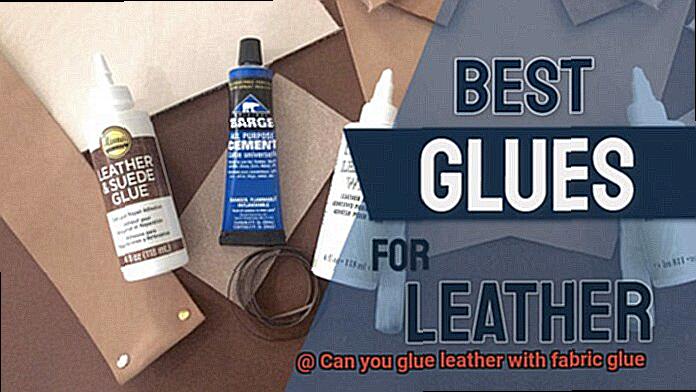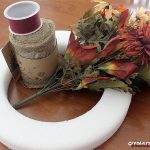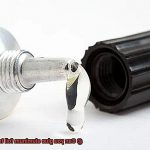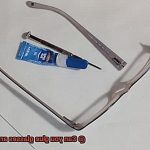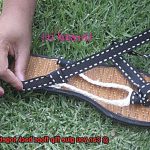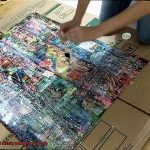When it comes to sticking materials together, the right adhesive can make or break your project. But what about joining leather and fabric? Leather is known for its elegance and durability, while fabric glue has gained popularity for bonding textiles. So, can you really use fabric glue to stick leather? Let’s dig into the pros and cons of this unusual combo from a casual and professional perspective.
From a casual standpoint, using fabric glue to bond leather seems like an easy and cost-effective choice. It’s accessible to DIY enthusiasts and doesn’t require any fancy tools or techniques. Plus, it gives a smooth finish and flexes with ease, ensuring a comfortable fit when combining leather with fabric.
However, from a professional viewpoint, relying solely on fabric glue for leather bonding may have some downsides. One major concern is long-term durability. While fabric glue creates an instant bond, it may not hold up as well over time compared to stitching or specialized leather adhesives. Continuous stress or exposure to moisture can weaken the bond, leading to peeling or detachment.
Moreover, leather’s unique properties pose challenges for fabric glue. It’s thick, dense, and porous – making it less receptive to the adhesive. Some types of leather may not adhere well or absorb enough glue, resulting in a weaker bond that can easily be damaged.
To complicate matters further, leather comes in various textures and finishes – from smooth to rough and glossy to matte. Fabric glue might not adapt equally well to all these variations, potentially affecting the overall look of your project.
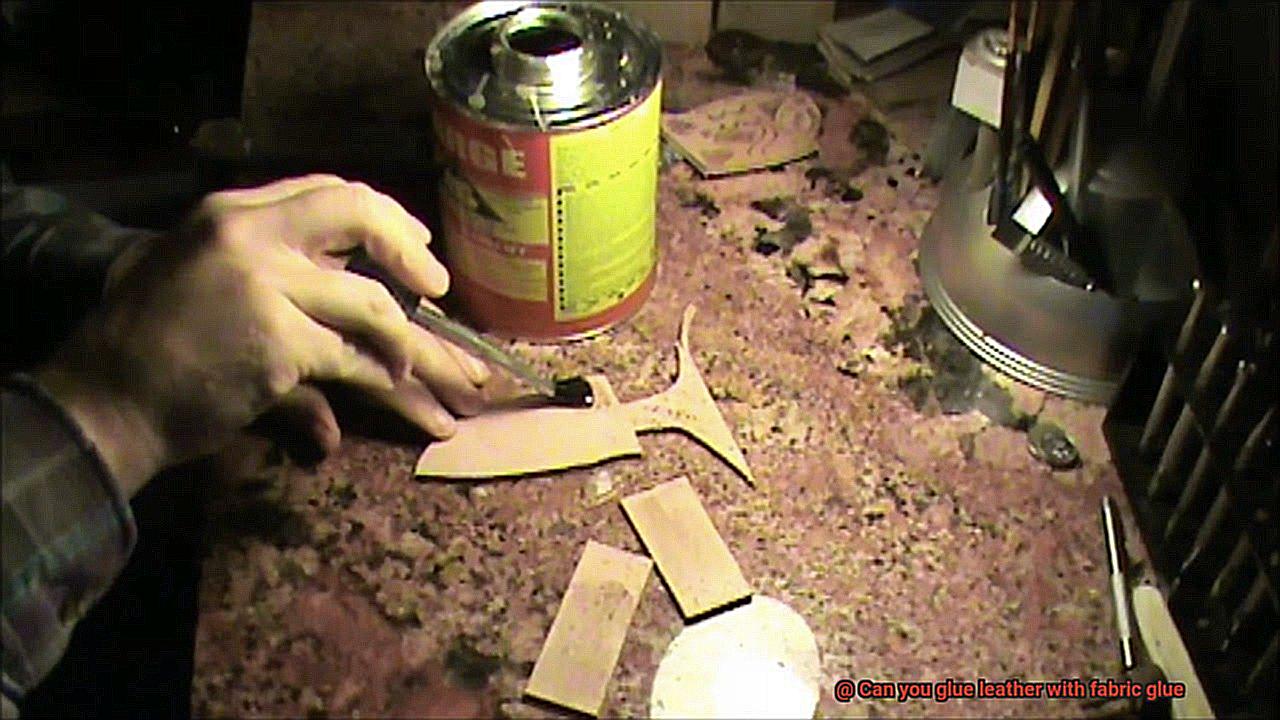
In summary, while fabric glue offers convenience for casually bonding leather with fabric, it may not provide the long-lasting durability needed for professional or frequently used leather items. For critical projects, it’s best to explore specialized leather adhesives or traditional stitching methods that ensure a strong and resilient bond.
Now that we’ve explored the pros and cons of using fabric glue for leather bonding, let’s dive deeper into each aspect. We’ll uncover more insights, discuss specific use cases, and share expert tips to maximize the effectiveness of fabric glue in leather bonding. Get ready to embark on an exciting journey into the world of unconventional pairings – where leather meets fabric.
The Challenges of Gluing Leather with Fabric Glue
Contents
- 1 The Challenges of Gluing Leather with Fabric Glue
- 2 Is Fabric Glue Suitable for Bonding Leather?
- 3 Alternatives to Fabric Glue for Gluing Leather
- 4 Testing the Suitability of Fabric Glue on Leather
- 5 Applying Fabric Glue to Leather: Tips and Tricks
- 6 Curing and Drying Times for Using Fabric Glue on Leather
- 7 Benefits of Using Specialized Adhesives on Leather
- 8 Conclusion
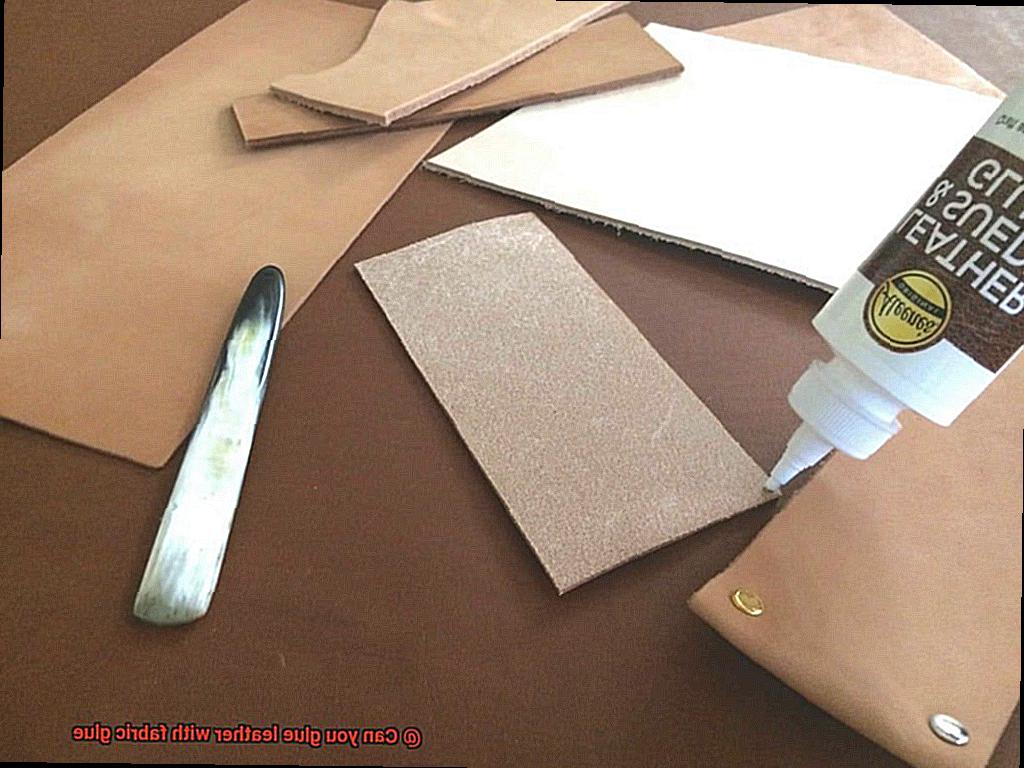
Gluing leather can be a daunting task, especially when using fabric glue. Leather’s unique texture and composition present several challenges for this type of adhesive. In this article, we will explore the difficulties associated with using fabric glue on leather and provide insights into alternative adhesive options.
Leather’s Unyielding Nature:
Leather’s tough and durable nature, known for its distinct texture, poses a significant hurdle for fabric glue. The oils present in leather can repel adhesives, making it difficult for fabric glue to form a strong bond. Furthermore, leather’s tendency to stretch and move can cause the bond created by fabric glue to weaken over time. This lack of flexibility, coupled with the need for strength to withstand stress and strain, results in a less durable bond.
The Permeable Challenge:
The porous nature of leather presents another obstacle when using fabric glue. Leather absorbs moisture, which can interfere with the adhesive properties of the glue and compromise the bond. Additionally, if not specifically formulated for leather, fabric glue may leave unsightly residue or stains on the leather surface.
Limitations of Fabric Glue:
While some fabric glues claim to be suitable for leather, it is crucial to test a small, inconspicuous area beforehand to ensure compatibility and effectiveness. However, in cases where a robust and long-lasting bond is desired, exploring alternative adhesive options explicitly designed for bonding leather, such as leather glue or contact cement, may be necessary.
Is Fabric Glue Suitable for Bonding Leather?
If so, you may have wondered if fabric glue would be the solution to your problem. While fabric glue is a convenient option for many fabric-related crafts and repairs, it may not be the best choice when it comes to bonding leather.
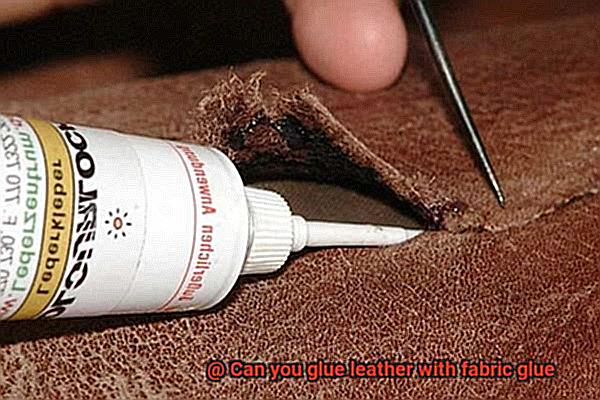
Let’s delve into the world of fabric glue and leather bonding to find out more. First and foremost, the type of fabric glue you use is crucial. Water-based fabric glues are generally not recommended for bonding leather because they tend to have weaker adhesion and can make the leather stiff and inflexible.
On the other hand, solvent-based fabric glues can provide better adhesion, but they can also be harsh on the leather and cause damage or discoloration if not used properly. Epoxy-based fabric glues, however, are known for their strong bond and versatility. They can adhere to a wide range of materials, including leather. The key here is to choose an epoxy glue specifically designed for bonding leather.
But that’s not all. Another factor to consider is the type of leather you’re working with. Genuine leather, suede, and faux leather all have different properties that may affect how well the glue adheres. Genuine leather, being more porous than faux leather, requires careful consideration during the bonding process. Testing the fabric glue on a small, inconspicuous area of the leather before applying it to the entire piece is always a smart move.
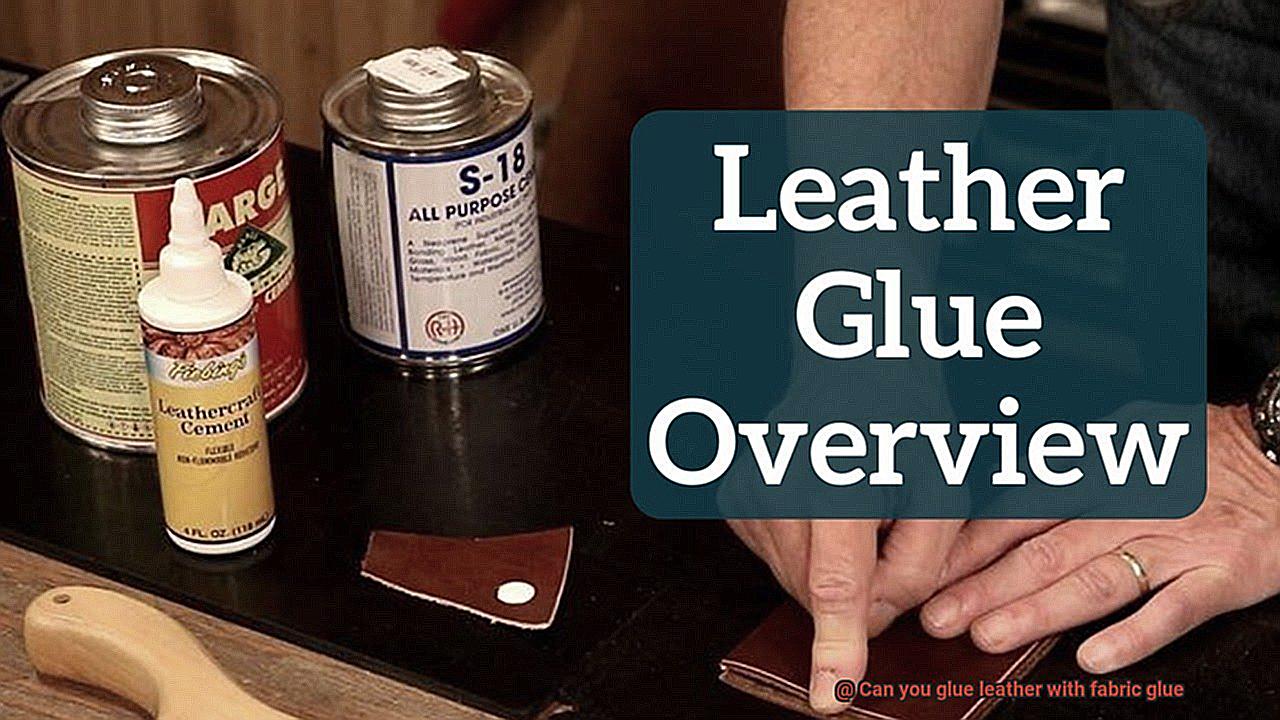
Proper preparation and cleaning of the leather surface are also crucial for achieving a successful bond. Before applying the fabric glue, make sure the leather is clean, dry, and free from any oils or residues that may hinder adhesion. Gently cleaning the surface with a mild soap or specialized leather cleaner and allowing it to dry completely will ensure the best possible outcome.
Alternatives to Fabric Glue for Gluing Leather
While fabric glue is often the go-to choice, there are alternative adhesives that can provide an even stronger and more durable bond. In this blog post, we explore the world of adhesive alternatives and offer a range of options that will ensure your leather projects stand the test of time.
Contact Cement:
Considered the heavyweight champion of adhesives, contact cement is a formidable alternative to fabric glue. Widely used in the construction industry, contact cement forms an instant bond when pressed together. It excels at bonding materials like leather, wood, and metal. Simply apply a thin layer to both surfaces, allow it to dry until tacky, then firmly press them together. The result? A bond that won’t let you down.
Epoxy Adhesive:
Prepare to meet the superhero of adhesives: epoxy adhesive. Comprising a resin and a hardener, this two-part adhesive creates an incredibly strong and durable bond. Although commonly used for metals and ceramics, epoxy adhesive can also be used for gluing leather. Mix the resin and hardener according to instructions, apply a thin layer to both surfaces, press them firmly together, and let it cure for the recommended time. The outcome? A bond that defies time itself.
Leather Cement:
Crafted specifically for bonding leather, leather cement is a flexible and moisture-resistant adhesive widely used in leatherworking projects. It provides a long-lasting bond that can withstand temperature changes and wear. Apply a thin layer to both surfaces, wait until tacky, then firmly bring them together. With leather cement, your projects are guaranteed to withstand the test of time.
Super Glue or Cyanoacrylate Adhesive:
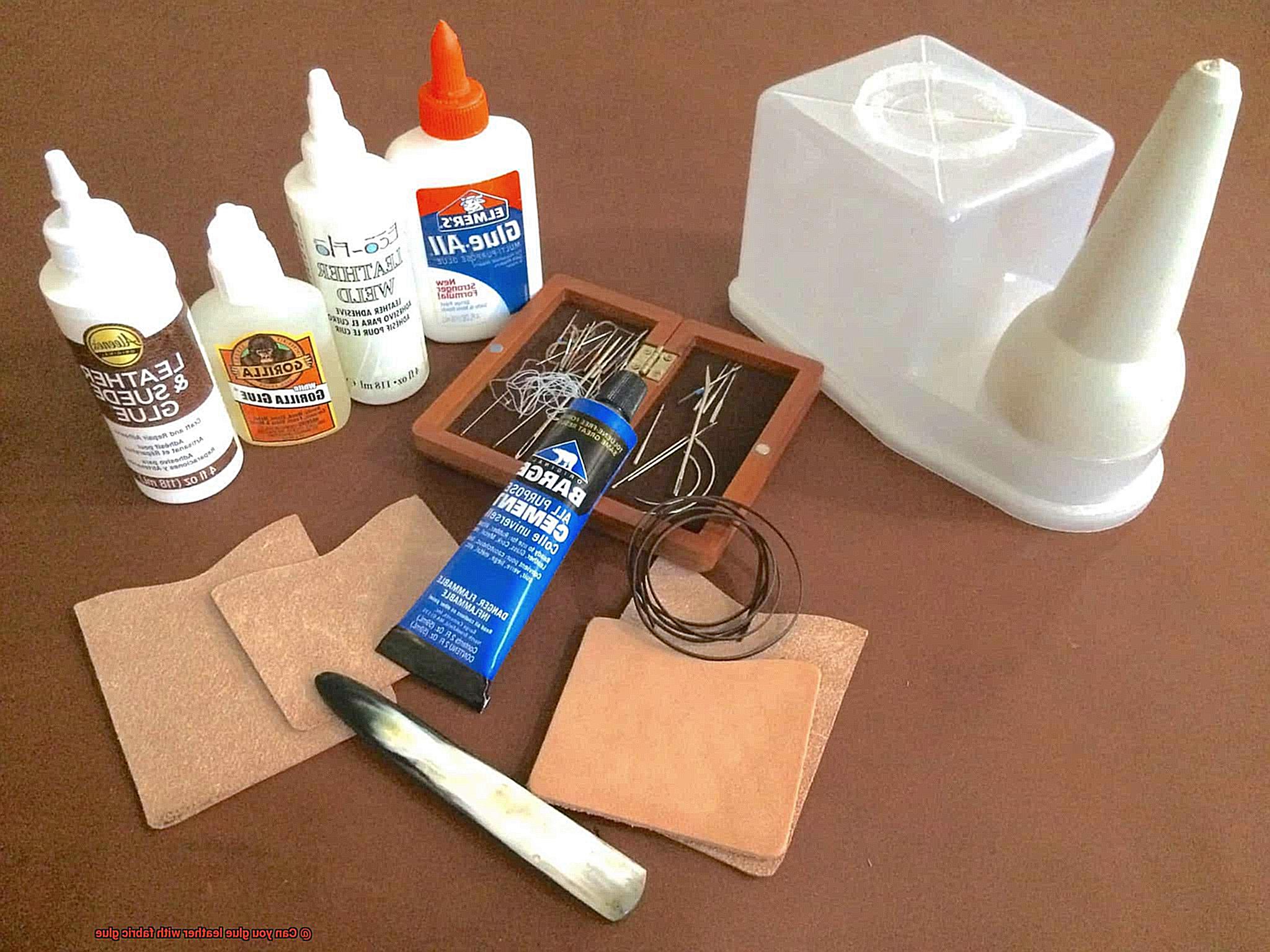
In some cases, super glue or cyanoacrylate adhesive can also be used for gluing leather. These fast-setting adhesives create a strong bond when surfaces are pressed together. However, caution is required to prevent staining or damaging the leather. Use sparingly and apply in thin layers to avoid any mishaps.
Testing the Suitability of Fabric Glue on Leather
When it comes to leather, finding the right adhesive is crucial for ensuring a durable bond. While fabric glue may be suitable for fabrics like cotton or polyester, leather’s unique texture and composition demand a stronger adhesive. In this article, we will explore the process of testing fabric glue on leather and discuss alternative adhesives that will stand up to the challenge.
Understanding Leather:
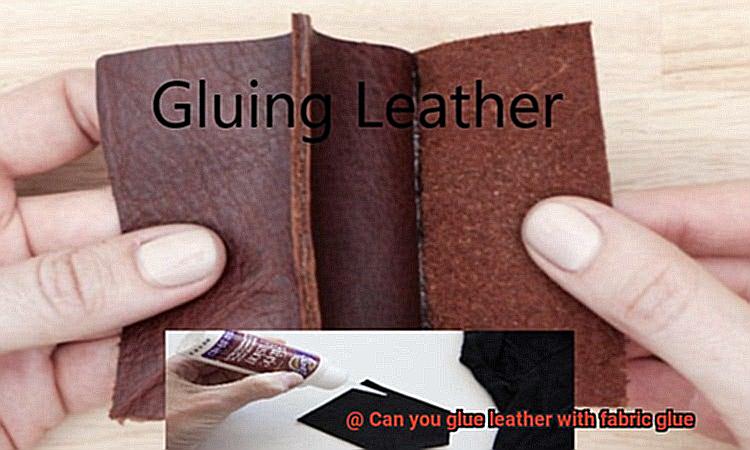
Before delving into the testing process, it is essential to understand the different types of leather. Full-grain, top-grain, and bonded leather each have distinct characteristics and require specific adhesion techniques. Selecting an appropriate adhesive is key to achieving a bond that can withstand the demands placed on leather.
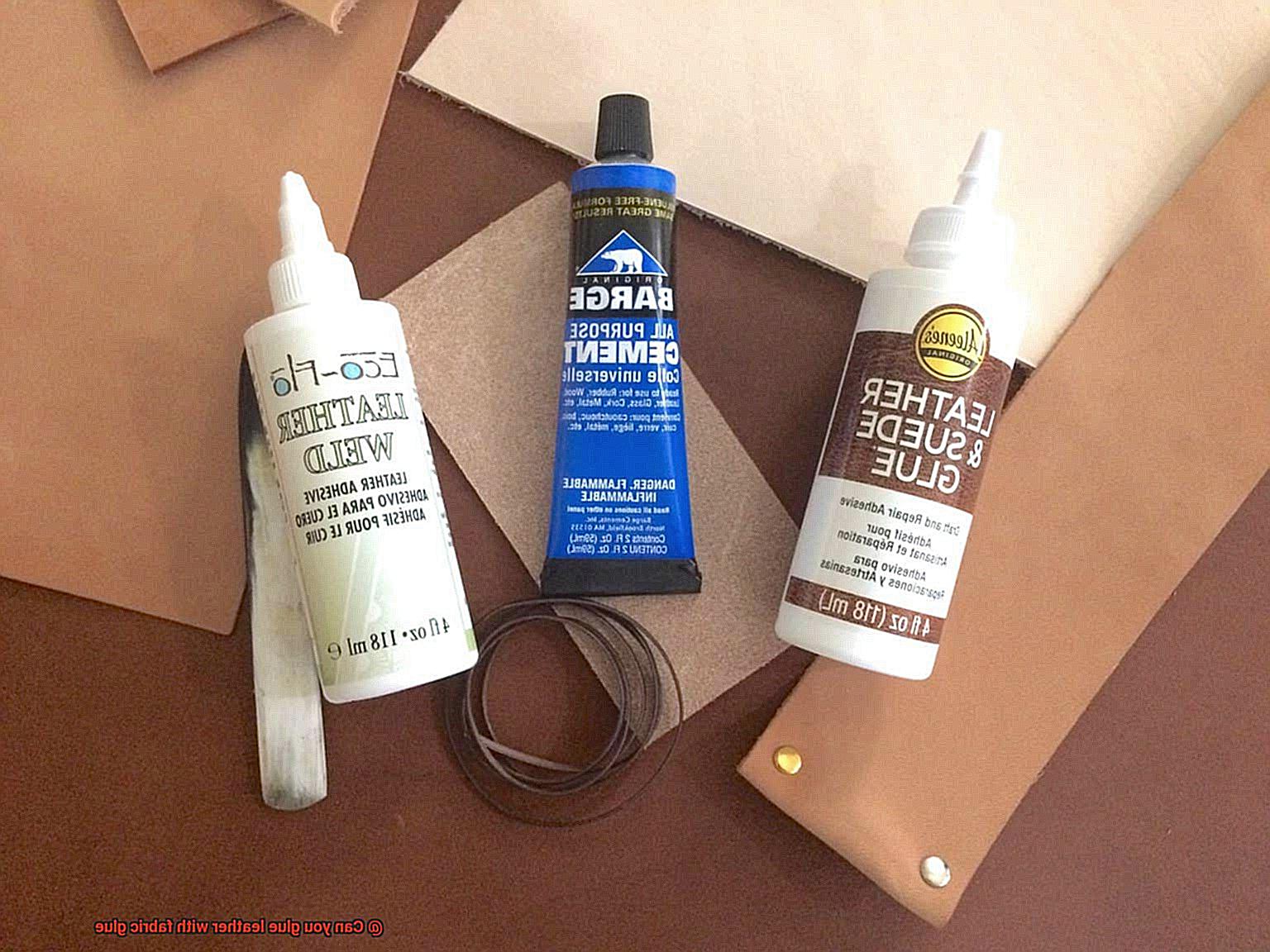
The Testing Process:
- Choose a small, inconspicuous area of the leather to apply the fabric glue.
- Apply a modest amount of fabric glue and firmly press the surfaces together.
- Allow the adhesive to dry according to the manufacturer’s instructions.
- Inspect the bond between the fabric glue and leather for any signs of lifting, peeling, or weakening.
- Consider the stress and strain that will be placed on the bonded area, as fabric glue may not provide sufficient strength for high-stress areas such as seams or edges.

Results and Next Steps:
If fabric glue fails to deliver a satisfactory bond, it is advisable to remove the adhesive using an appropriate solvent or adhesive remover. However, caution must be exercised when using solvents on leather as they can potentially damage or discolor the material.
Alternatives to Fabric Glue:
While fabric glue may work for certain types of leather and lighter applications, superior alternatives exist. Contact cement, epoxy adhesive, and specialized leather adhesives offer stronger and more durable bonds that can withstand the demands of leather projects. These alternatives provide a reliable solution for bonding leather without compromising on longevity and strength.
Applying Fabric Glue to Leather: Tips and Tricks
In this guide, we will explore the tips and tricks for achieving a strong and durable bond when applying fabric glue to leather. Let’s dive in.
Tip 1: Clean the Leather Surface
Before applying fabric glue to leather, it is crucial to clean the surface thoroughly. Leather can accumulate dirt, oils, or residue that may hinder the adhesive properties of the glue. To ensure the best results, use a mild soap and water solution or a specialized leather cleaner to gently clean the leather. This step will create an optimal bonding surface for the fabric glue.
Tip 2: Apply Thin Layers
When it comes to fabric glue and leather, less is more. It is essential to apply only a small amount of glue and spread it evenly across the surface. Applying too much can cause the glue to seep through the leather, leaving visible marks. A thin layer of fabric glue is all you need for a strong and secure bond.
Tip 3: Use Precision Applicators
To apply fabric glue accurately, it is best to use a small brush or an applicator designed for precision. These tools will help you spread the glue evenly and avoid any damage or discoloration to your leather. Take your time and be gentle while applying the glue, ensuring complete coverage on the desired areas.
Tip 4: Align and Press Firmly
After applying the fabric glue, carefully align your leather pieces and press them firmly together. Fabric glue forms a strong bond quickly, so it is crucial to ensure proper alignment before pressing. Once pressed together, repositioning becomes challenging. Take extra care in aligning intricate or delicate designs to achieve the desired result.
Tip 5: Enhance Adhesion with Clamping
To ensure that your glued leather pieces stay in place while drying, consider using clamps or binder clips to gently hold them together. This will help maintain pressure and create a strong bond. However, be mindful not to apply excessive pressure that could damage the leather. Use clamping as an additional measure to enhance the adhesion of the fabric glue.
Curing and Drying Times for Using Fabric Glue on Leather
Today, we delve into the science behind curing and drying times when using fabric glue on leather. This knowledge will elevate your DIY projects to new heights, guaranteeing a bond that can withstand even the most daring leather-clad adventures.
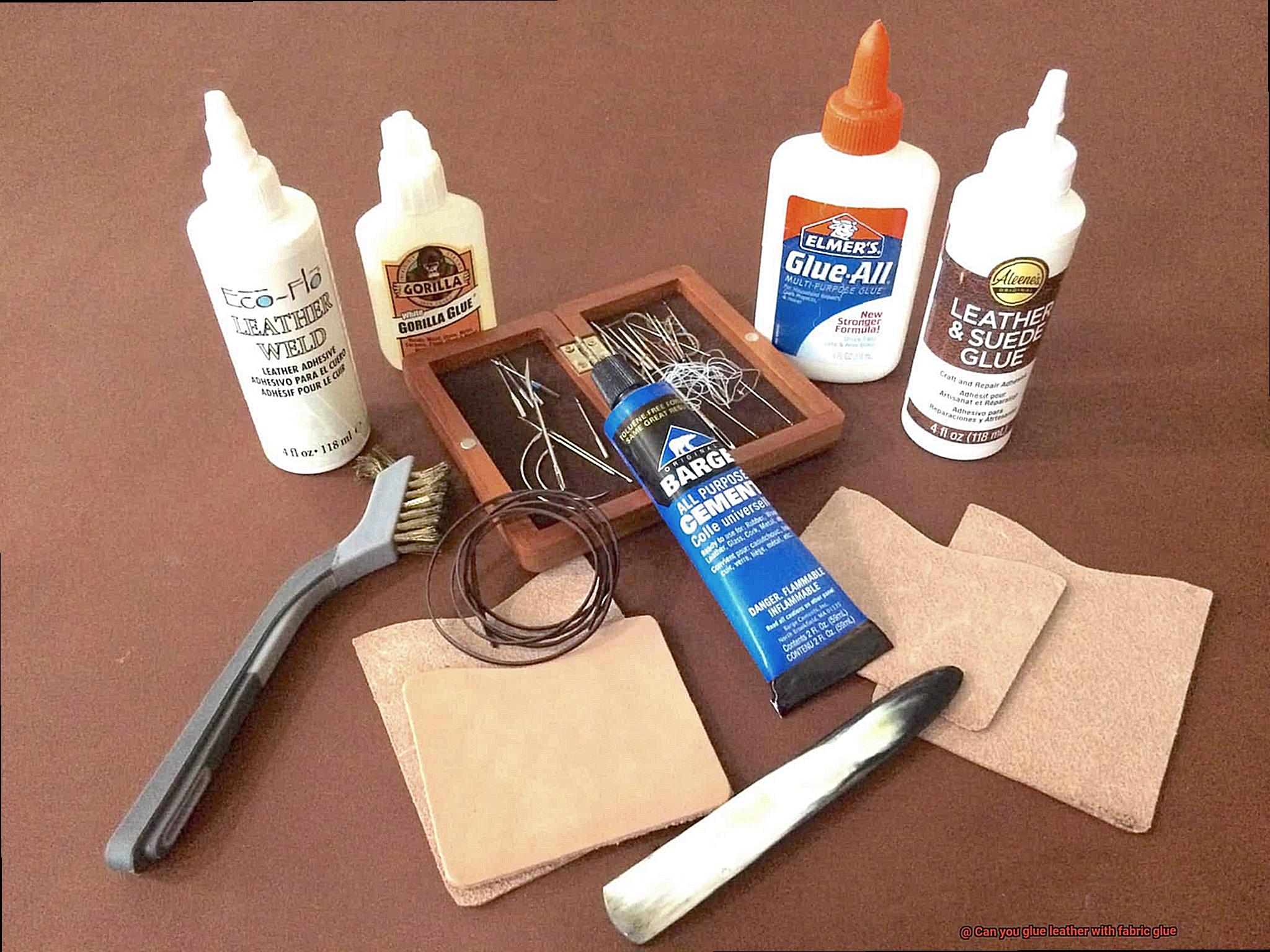
Let’s begin with the enchanting process of curing. This is the magical transformation when your fabric glue goes from wet to wow, creating a secure bond that can brave any wild escapade. Different fabric glues have varying curing times, so it’s imperative to consult those instructions (yes, we all love to skip them sometimes) and plan accordingly. Curing time can range from a few hours to several days, demanding a dose of patience.
Now, don’t mistake curing time for drying time. Drying time is all about evaporation. It’s when the solvents or water content in the glue bid their farewells and vanish into thin air. Factors like temperature, humidity, and your generous application of glue influence drying time. Exercise wisdom and allow ample time for complete drying before bringing those leather pieces together.
Speaking of glue application, remember that less is more. Apply a thin and even layer of adhesive on both the fabric and leather surfaces for maximum bonding power. Resist the temptation to move or press those pieces together prematurely. Let the glue work its magic undisturbed during the drying process. If necessary, employ a weight or clamp to ensure even pressure and contact between the fabric glue and leather.
Now, fast-drying formulas may entice us with promises of instant results. But here’s a reality check: even with quick-drying glue, complete curing still takes time. Resist showcasing your masterpiece before it’s fully cured. Remember, patience pays off.
In conclusion, when it comes to fabric glue and leather, curing and drying times are crucial. Follow the instructions, allow sufficient time, and witness a bond so robust it could survive the wildest adventures of a superhero. So, grab that fabric glue, unleash your creativity, and let the magic unfold.
Benefits of Using Specialized Adhesives on Leather
When it comes to leather crafts or DIY projects, choosing the right adhesive is crucial. While regular fabric glue may seem convenient, using specialized adhesives designed specifically for leather can make a world of difference. These specialized adhesives offer a range of benefits that can enhance the quality and longevity of your leather creations.
First and foremost, specialized adhesives are formulated to bond leather materials effectively. This means that they provide a strong and durable bond that can withstand the test of time. Say goodbye to worrying about your leather creations falling apart. Unlike fabric glue, which may not be able to provide sufficient adhesion on leather surfaces, these specialized adhesives have the necessary properties to bond leather effectively.
One important factor to consider when working with leather is its natural movement and stretching. Leather naturally moves and stretches, so it’s crucial to use an adhesive that can accommodate these movements. Specialized leather adhesives contain ingredients that enhance flexibility and elasticity, allowing the bond to remain intact even when the leather is subjected to pressure or stretching. This ensures that your leather creations stay intact and in good shape.
In addition, specialized leather adhesives have a higher resistance to heat and moisture. Whether you’re using your leather creation outdoors or in a high humidity environment, these adhesives have got you covered. They are designed to withstand heat and moisture, making them suitable for various applications.
One common problem with using regular adhesives on leather is that they can leave visible residue or marks on the surface after drying. This can ruin the aesthetics of your leather creations. However, specialized leather adhesives are designed to maintain the aesthetics of the leather. They leave no visible traces after drying, ensuring that your creations look professional and flawless.
Time is precious, especially when you’re in the middle of a project. Specialized leather adhesives have a fast-drying time, allowing you to complete your projects efficiently and conveniently. This means that you can move on to the next step of your project without having to wait for the adhesive to dry.
Moreover, specialized leather adhesives come in various forms such as liquid, gel, or tape. This gives you the flexibility to choose the most appropriate option for your specific project. Whether you need a precise application with a liquid adhesive or a more controlled application with a gel or tape, you can find the right form for your needs.
Furthermore, some specialized leather adhesives offer additional benefits such as UV resistance or resistance to chemicals or oils. This enhances their suitability for different applications and ensures that your leather creations stay in pristine condition.
Using specialized adhesives on leather also ensures that the adhesive does not damage or weaken the leather fibers. This extends the longevity and quality of the material, allowing you to enjoy your leather creations for years to come.
V4_EaCHcyNY” >
Also Read: Does Gorilla Glue Work On Fabric?
Conclusion
In conclusion, fabric glue may appear to be a convenient choice for sticking leather and fabric together, but it may not deliver the lasting strength needed for professional or frequently used leather items. While fabric glue can create an instant bond, it may struggle to hold up over time compared to stitching or specialized leather adhesives. Leather’s distinctive characteristics, such as its thickness, density, and porosity, present challenges for fabric glue. Certain types of leather might not adhere well or absorb enough glue, resulting in a feeble bond that is easily susceptible to damage.
To guarantee a robust and resilient bond when gluing leather, it is advisable to explore alternative adhesive options. Contact cement, a heavyweight adhesive commonly used in construction, forms an instantaneous bond between materials like leather. Epoxy adhesive boasts a powerful and durable bond suitable for gluing leather. Leather cement is specifically formulated for bonding leather and offers flexibility and moisture resistance. Super glue or cyanoacrylate adhesive can also be utilized in certain cases; however, it should be applied sparingly to prevent staining or harming the leather.
Ultimately, selecting the appropriate adhesive for bonding leather depends on the specific project and desired outcome. It is crucial to consider factors such as the type of leather being used, the stress exerted on the bonded area, and the desired longevity of the project.

